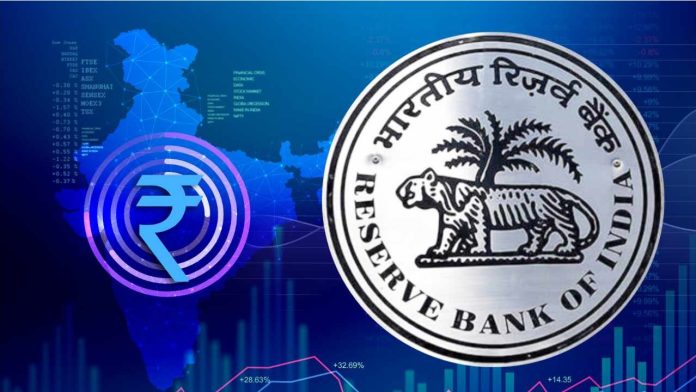Eight years ago today, on August 15, 2014, from the Red Fort, when Prime Minister Narendra Modi announced the grand launch of the ambitious program ‘Digital India’ in the country, then who knew that the issue of digitization of currency i.e.
rupee was also included in this campaign. will be joined. Two years after this announcement, on November 8, 2016, the Prime Minister announced the introduction of new notes (of five hundred and two thousand rupees) by abolishing the old notes of five hundred and one thousand rupees, so the attention of the country would be such cashless.
Went towards creating a system in which paper notes are not needed. Instead, all transactions are done through digitized means or through debit-credit cards. In these methods, money is visible to us only in the form of numbers on computers and mobiles etc. and it is used through debit, credit card, mobile wallet etc.
It is actually a method of online transaction in which digital money or digital currency as well as plastic money (credit-debit card) is used as the pay-wallet to make the payment. Now another new method is ready to be implemented.
The claim is that the e-Rupee system will take the country’s payment system to a new height and the Indian market will be drenched in the light of this kind of digital Diwali. If we look at the success of digital modes of payment in the country with reference to the digital rupee, it is known that demonetisation and the subsequent lockdown in the Corona era has had a positive impact on digital payments.
In the year 2017, only 22 per cent of payments were going cashless in the country including all methods like credit-debit cards, check-drafts and mobile wallets. But in the subsequent five years, the picture has completely changed.
According to the report of ‘ACI Worldwide’, an organization that monitors digital payment systems, in the financial year 2020-21, 2550 million transactions (number of payments) were done in India through digital methods. In this case, India is on top of the world and we are followed by China (1570 crores) and South Korea (600 crores). a
Merica is far behind in this matter i.e. ninth, where only 120 crore such transactions were done in the financial year 2020-21. According to the Ministry of Electronics and Information Technology, 7422 crore payment related transactions were done through digital methods in the financial year 2021-22 as against 5,554 crore transactions in the financial year 2020-21.
According to the report of Internet Google and Boston Consultancy Group (BCG), its role in India’s GDP can be up to 15 percent. Plastic money vs digital money: Unlike paper notes and metal coins, two systems of plastic money or digital money free us from carrying money in our pockets or wallets.
It is said that about 75 years ago, plastic credit cards were invented with the aim that instead of keeping notes with them, people should keep one or more cards in their pockets and use them, free from the fear of theft. Use to transfer money from one account to another. The credit card also gave the facility to the consumers to spend more than the amount deposited in their account when required and later pay back the excess amount with interest. Later on, new forms of credit cards emerged, such as debit cards, travel cards, gift cards, petrol cards, food cards, etc.
A prepaid card called RuPay has also been introduced in our country which is used for cashless transactions. Digital money is a form of money that is generally the same value as the currency in question, rather than paper currency (currency) issued by a state-owned bank, but can be transmitted electronically rather than on paper or coins or cards, such as mobile phones, mobile phones, etc. It is kept in computer-laptop or any other electronic wallet.
Even though you cannot keep this digital money or virtual currency in your pocket, you cannot feel it by touching it, but it can be obtained only in exchange for the same government currency that the government bank (Reserve Bank of India in India’s case) paper notes and metal coins.
Therefore digital money is equal in value to government currency and is easily accepted. The specialty of this currency is that it is a medium of transaction based on the Internet, so there is no problem in buying goods, services etc., anytime and anywhere. It does not even require a bank or an ATM for its transactions, so it accelerates the flow of money in the economy.
After demonetisation in the year 2016, the manner in which the old notes of five hundred and one thousand rupees were banned, due to which there was a shortage of cash. Therefore, business related to digital currency got an impetus. The work of companies providing such facilities also increased during this period. There is a claim that digital money was first introduced in 1990.
At that time in the world, Dot Kam Bubble used it as currency. A few years later, in 2006, a company called Liberty Reserve launched a digital currency service. Its users could convert their holdings of US Dollars or Euros into Liberty Reserve Dollars or Liberty Reserve Euros. Instead, they had to pay a fee of one per cent. However, later it was alleged that some people are using this digital currency to convert black money into white.
When such news came to the fore, the US government had closed this system of digital currency. These days bitcoin is being used extensively in the world as a digital currency. Bitcoin is spreading rapidly all over the world and its fans and users are increasing in the time of government restrictions.
By the way, in the last few years, due to the government not recognizing bitcoin and such currencies, their business and value have decreased. In such a situation, the way for digital currency (e-Rupee) issued by public sector banks (such as the Reserve Bank) seems to be opening













